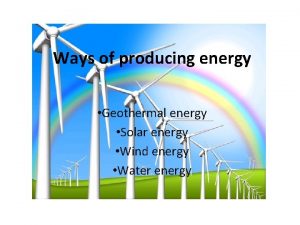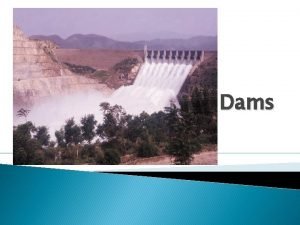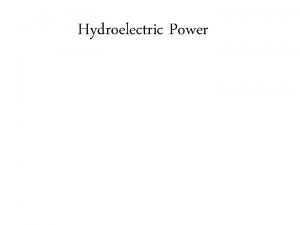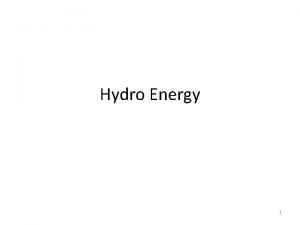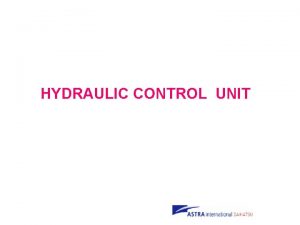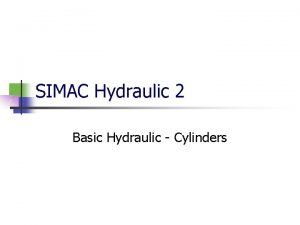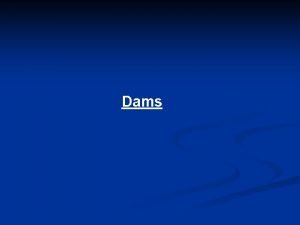Chapter 1 Introduction 2392019 Hydraulic Engineering Dams W








- Slides: 8

Chapter 1 Introduction 23/9/2019 Hydraulic Engineering /Dams & W. R Eng/ Binahi. M. Amin

FLOW IN OPEN CHANNELS An open channel is a conduit in which a liquid flows with a free surface. The free surface is actually an interface between the moving liquid an overlying fluid medium and will have constant pressure. the overlying fluid : the most common liquid with air at atmospheric pressure. The prime motivating force for open channel flow is gravity. 23/9/2019 Hydraulic Engineering /Dams & W. R Eng/ Binahi. M. Amin

TYPES OF CHANNELS Prismatic and Non-prismatic Channels A channel in which the cross-sectional shape and size and also the bottom slope are constant is termed as a prismatic channel. Most of the man-made (artificial) channels are prismatic channels over long stretches. The rectangle, trapezoid, triangle and circle are some of the commonly used shapes in manmade channels. All natural channels generally have varying cross-sections and consequently are non-prismatic. 23/9/2019 Hydraulic Engineering /Dams & W. R Eng/ Binahi. M. Amin

Classification of Flow in open channel Steady and Unsteady: Flow is said to be steady if the depth of flow at a particular point does not change or can be considered constant for the time interval under consideration. The flow is unsteady if depth changes with time. Uniform Flow: Open Channel flow is said to be uniform if the depth and velocity of flow are the same at every section of the channel. Hence it follows that uniform flow can only occur in prismatic channels. For steady uniform flow, depth and velocity is constant with both time and distance. 23/9/2019 Hydraulic Engineering /Dams & W. R Eng/ Binahi. M. Amin

Steady non-uniform flow. Depth varies with distance but not with time. Unsteady flow The depth varies with both time and space. Spatially-Varied Flow If some flow is added to or abstracted from the system the resulting varied flow is known as spatially-varied flow SVF can be either steady or unsteady 23/9/2019 Hydraulic Engineering /Dams & W. R Eng/ Binahi. M. Amin

Gradually Varied and Rapidly Varied Flows gradually varied flow (GVF): If the change of depth in a varied flow is gradual so that the curvature of streamlines is not excessive. Frictional resistance plays an important role in these flows. The backing up of water in a stream due to a dam or drooping of the water surface due to a sudden drop in a canal bed are examples of steady GVF. The passage of a flood wave in a river is a case of unsteady GVF. rapidly varied flow (RVF): If the curvature in a varied flow is large and the depth changes appreciably over short lengths. A hydraulic jump occurring below a spillway or a sluice gate is an example of steady RVF. 23/9/2019 Hydraulic Engineering /Dams & W. R Eng/ Binahi. M. Amin

Uniform . GVF Steady RVF SVF Open channel flow GVF Unsteady RVF SVF 23/9/2019 Hydraulic Engineering /Dams & W. R Eng/ Binahi. M. Amin

a- Uniform flow d- Spatially VF b- GV unsteady flow c- RV unsteady flow Energy Line Yo a- Uniform flow Yo Yo B b-GV unsteady flow Y 1 Y 2 Surge c- RV unsteady flow Sudden drop at the gate d- SV flow Q 1 23/9/2019 Q 2 Hydraulic Engineering /Dams & W. R Eng/ Binahi. M. Amin
